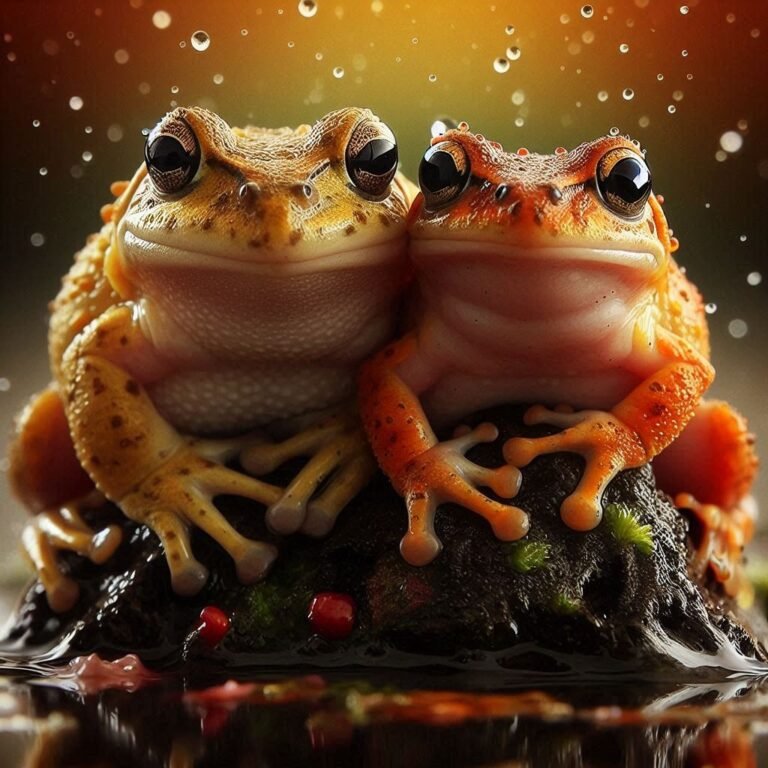Male vs Female Yellow-Bellied Slider Turtle: A Beginner’s Guide
Male vs Female Yellow-Bellied Slider Turtle: Yellow-Bellied Sliders are one of the most popular pet turtle species, known for their vibrant yellow stripes and friendly demeanor.
But have you ever wondered how to tell if your Yellow-Bellied Slider is a male or a female?
However, with a closer look and a bit of knowledge, you can learn to identify the subtle characteristics that distinguish male and female Yellow-Bellied Sliders.
Male vs Female Yellow-Bellied Slider Turtle: A Quick Guide
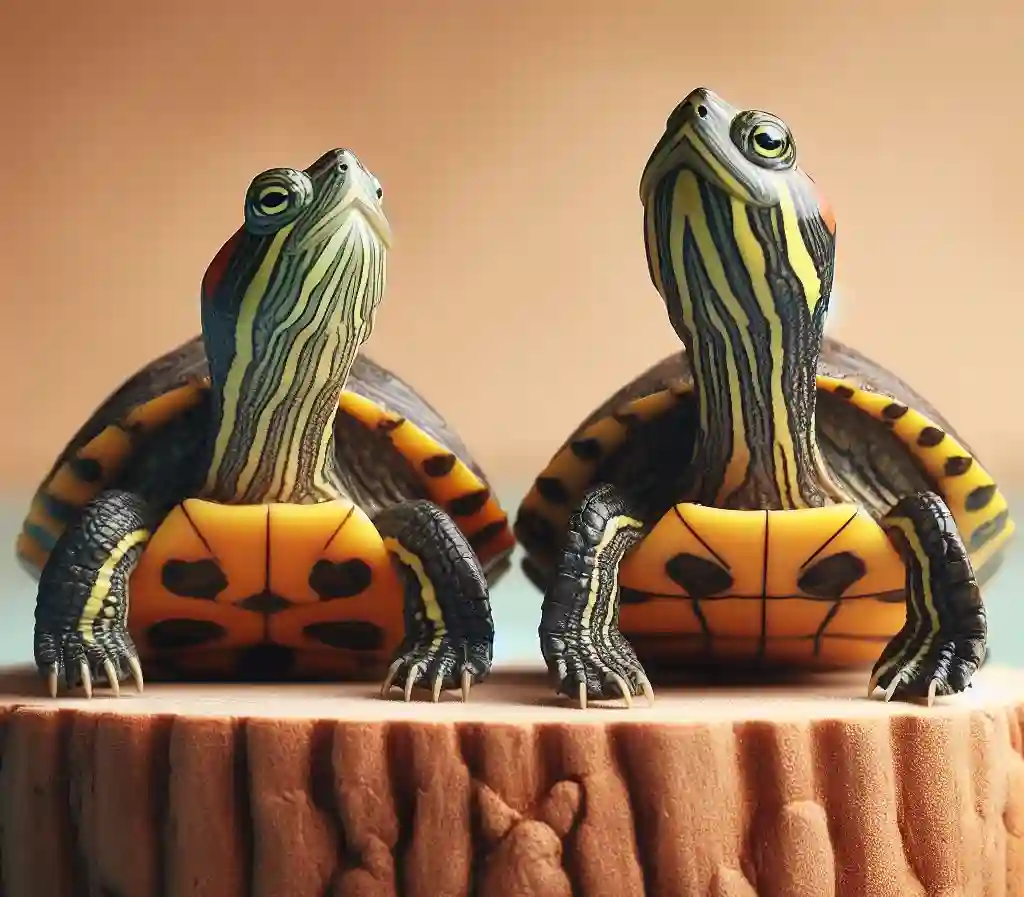
Male Yellow-Bellied Slider Turtle:
- Longer, thicker tail with a more muscular base
- Tail is longer than the distance from the vent to the tip of the carapace (shell)
- Cloaca is located closer to the base of the tail
- Head and jaw shape are more curved and pointed
- Chin has a more pronounced “V” shape
Female Yellow-Bellied Slider Turtle:
- Shorter, thinner tail with a less muscular base
- Tail is shorter than the distance from the vent to the tip of the carapace (shell)
- Cloaca is located closer to the vent
- Head and jaw shape are more rounded and less curved
- Chin has a more rounded or “U” shape
Other Key Differences:
- Males tend to have more prominent courtship behaviors, such as head-bobbing and tail-vibrating
- Females tend to be more docile and less aggressive
- Males have a more slender, tapered tail with a more pronounced “V” shape at the end
- Females have a more rounded, less tapered tail with a less pronounced “V” shape at the end
Physical Characteristics: Size and Shape Differences
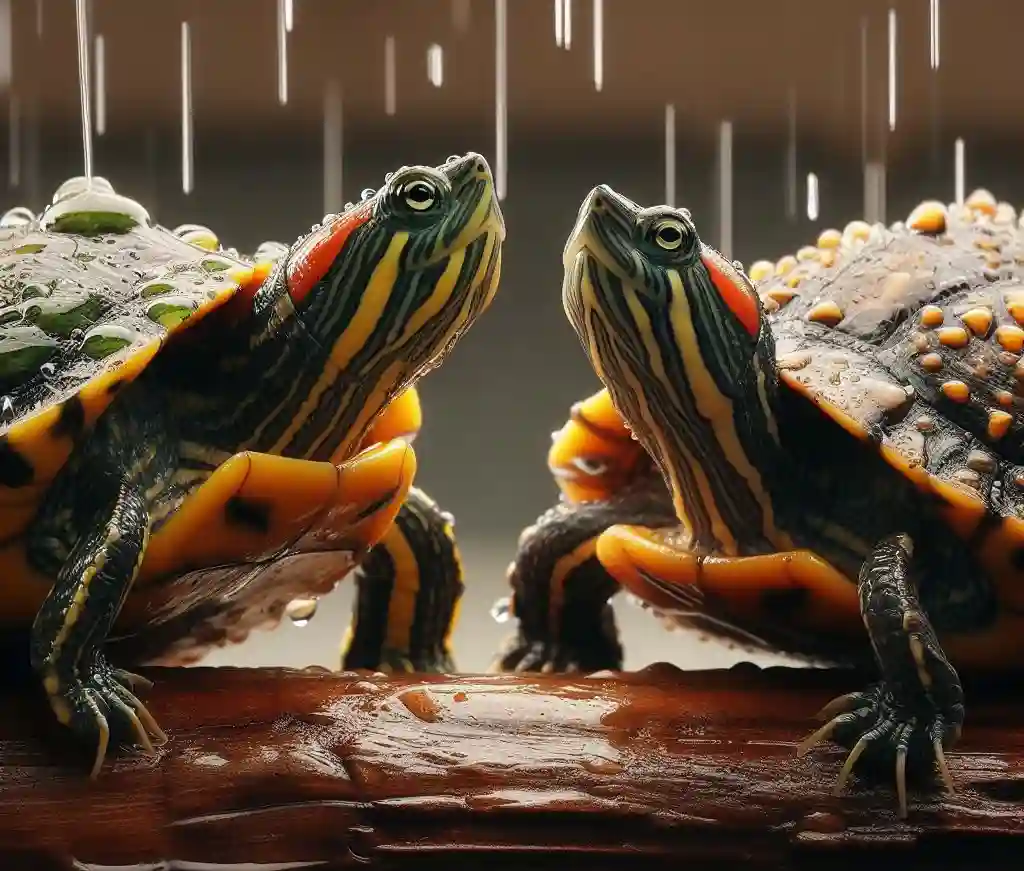
One of the most noticeable differences between male and female Yellow-Bellied Sliders is their size and shape. While both sexes have a similar overall shape, there are some subtle differences that can help you determine the sex of your turtle.
Male Yellow-Bellied Sliders:
- Generally smaller than females, with a carapace length of around 4-5 inches (10-13 cm)
- More slender and elongated, with a narrower shell
- Weigh around 2-4 ounces (50-100 grams)
Female Yellow-Bellied Sliders:
- Larger than males, with a carapace length of around 5-6 inches (13-15 cm)
- More rounded and dome-shaped, with a wider shell
- Weigh around 4-6 ounces (100-150 grams)
Tail of Distinction: Male vs Female Tail Characteristics
Male Yellow-Bellied Slider Turtles:
- Males have a longer, thicker tail that is generally more muscular than that of females.
- The tail of a male Yellow-Bellied Slider Turtle is typically longer than the distance from the vent to the tip of the carapace (shell).
- The cloaca, the multi-purpose opening used for reproduction, digestion, and excretion, is located closer to the base of the tail in males.
- The tail is often more slender and tapered, with a more pronounced “V” shape at the end.
Female Yellow-Bellied Slider Turtles:
- Females have a shorter, thinner tail that is generally less muscular than that of males.
- The tail of a female Yellow-Bellied Slider Turtle is typically shorter than the distance from the vent to the tip of the carapace (shell).
- The cloaca is located closer to the vent in females, making it more difficult to distinguish from the surrounding skin.
- The tail is often more rounded and less tapered, with a less pronounced “V” shape at the end.
The Claw-some Difference: Foreclaw Length
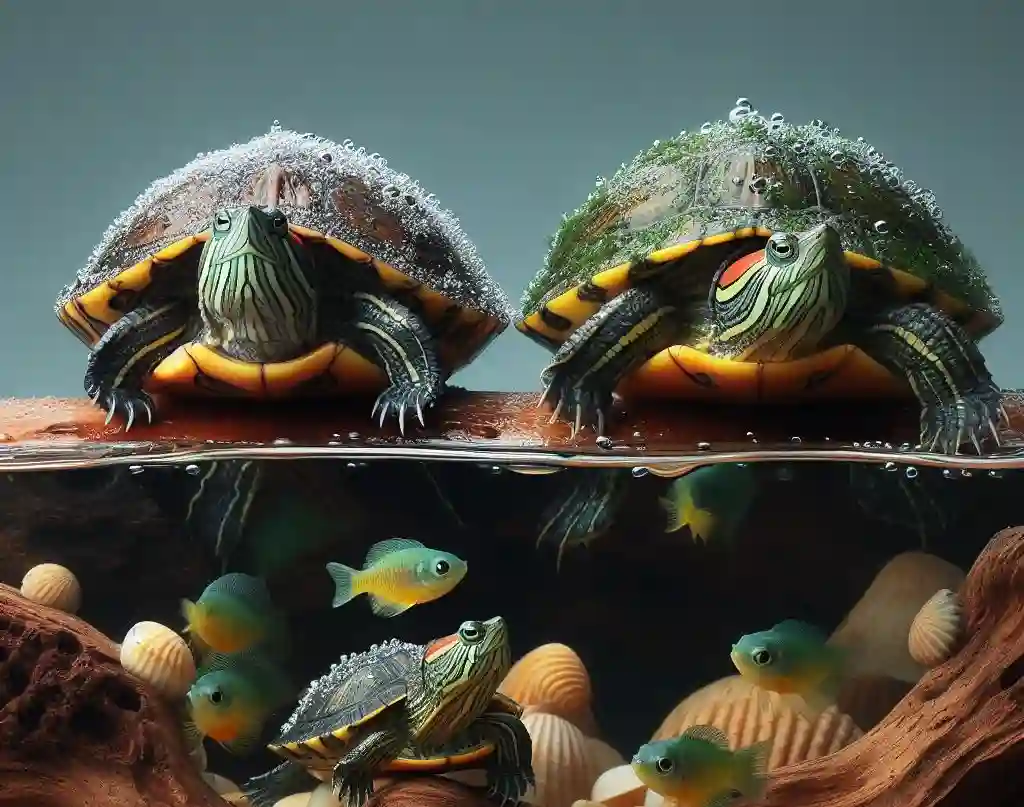
Another key characteristic that can help determine the sex of a Yellow-Bellied Slider is the length of its foreclaws. While not always a foolproof method, examining the foreclaws can provide valuable clues about your turtle’s sex.
Male Yellow-Bellied Sliders:
- Have longer, thicker, and more curved foreclaws
- The claws are often longer than the width of the toe pads
- The claws are also more muscular and stronger, which helps males grasp and hold onto females during mating
Female Yellow-Bellied Sliders:
- Have shorter, thinner, and less curved foreclaws
- The claws are often shorter than the width of the toe pads
- The claws are also less muscular and weaker, which is not necessary for females during mating
Plastron Perfection: Shell Shape
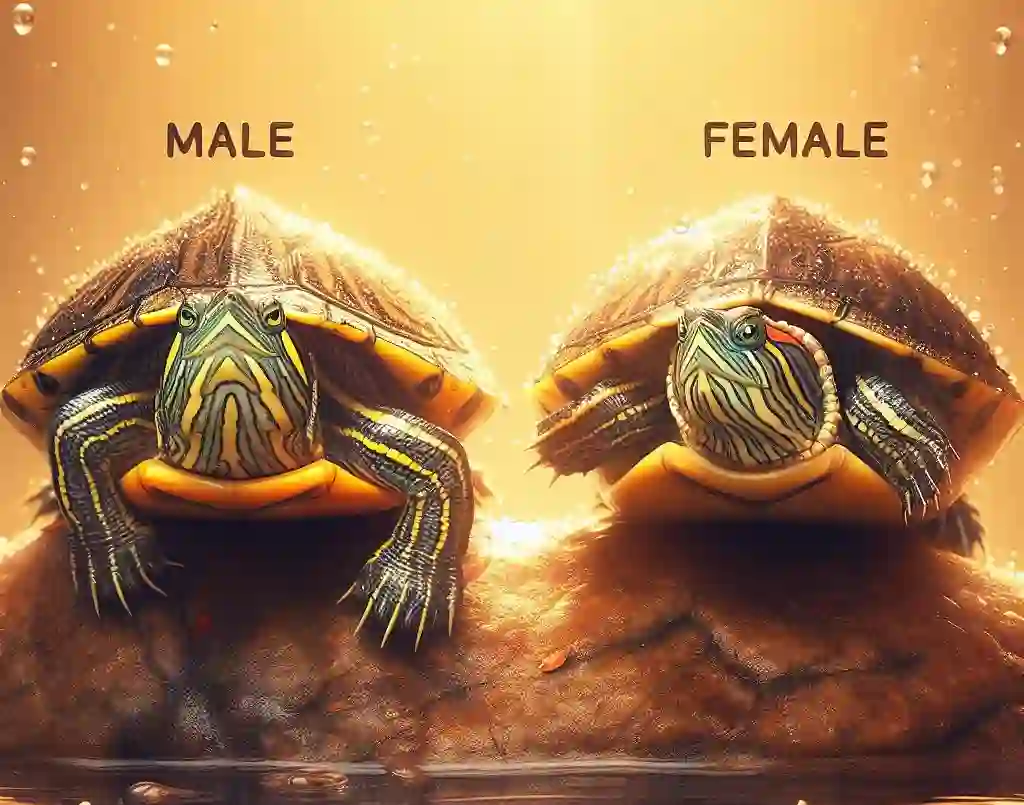
The plastron, or belly shell, of a Yellow-Bellied Slider can also provide clues about its sex. While not always a foolproof method, examining the shape and curvature of the plastron can help you determine the sex of your turtle.
Male Yellow-Bellied Sliders:
- Have a more curved and concave plastron, which is often more narrow and V-shaped
- The plastron is typically more flexible and can be bent inward more easily
- The suture lines (the lines where the scutes meet) are often more pronounced and deeper in males
Female Yellow-Bellied Sliders:
- Have a more flat and convex plastron, which is often wider and U-shaped
- The plastron is typically less flexible and more rigid
- The suture lines are often less pronounced and shallower in females
The difference in plastron shape and curvature is due to the reproductive needs of each sex. Males have a more curved plastron to accommodate their reproductive organs, while females have a more flat plastron to provide space for egg development.
Behavioral Clues: Mating and Courtship Behaviors
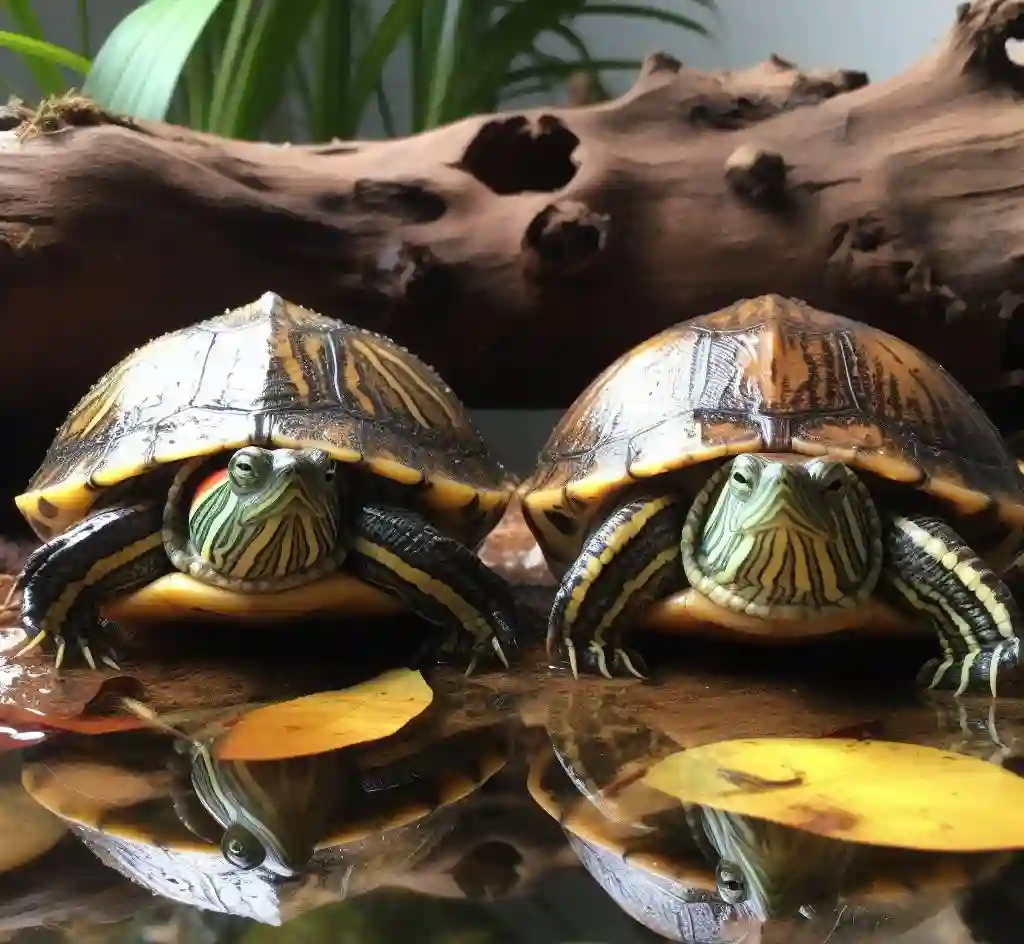
Male Yellow-Bellied Sliders:
- Engage in courtship behaviors such as head-bobbing, chin-stroking, and vocalizations to attract females
- Perform complex mating rituals, including swimming and diving displays, to impress females
- Are more aggressive and competitive during mating season, often fighting with other males for dominance
- Will often mount and grasp females during mating, using their strong foreclaws to hold onto them
Female Yellow-Bellied Sliders:
- Are more receptive to courtship behaviors and will often signal their receptiveness to males
- Will often swim away or hide when not receptive to mating, making it difficult for males to approach
- Are less aggressive and competitive during mating season, focusing on selecting a suitable mate
- Will often display a ” rejection display” by swimming away quickly or hiding when not interested in a male’s advances
Head and Jaw Shape: Subtle Differences Between Males and Females
While the differences in head and jaw shape between male and female Yellow-Bellied Slider Turtles are subtle, they can be a useful indicator of sex. Here’s what to look for:
Male Yellow-Bellied Slider Turtles:
- Males tend to have a slightly longer and narrower head than females.
- The jaw of a male Yellow-Bellied Slider Turtle is typically more curved and pointed, which helps during courtship and mating behaviors.
- The chin of a male turtle often has a more pronounced “V” shape, which can be a distinguishing feature.
Female Yellow-Bellied Slider Turtles:
- Females generally have a shorter and wider head than males.
- The jaw of a female Yellow-Bellied Slider Turtle is typically more rounded and less curved than that of a male.
- The chin of a female turtle often has a more rounded or “U” shape, which can help distinguish it from a male.
Coloration and Pattern Variations
Coloration:
- Both male and female Yellow-Bellied Slider Turtles can display a range of colors, including yellow, brown, olive, and black.
- The intensity and vibrancy of the colors can vary between individuals, but this does not correlate with sex.
- Some turtles may have more prominent yellow or orange markings on their heads, legs, or shells, but this is not a sex-specific trait.
Pattern Variations:
- The pattern of stripes, blotches, or swirls on the shell and skin can vary greatly between individuals, but this does not indicate sex.
- Some turtles may have more pronounced stripes or patterns on their heads, legs, or shells, but this is not a reliable indicator of sex.
Why Coloration and Pattern Variations Are Not Reliable Indicators of Sex:
- Coloration and pattern variations are influenced by a combination of genetic and environmental factors, such as diet, habitat, and exposure to sunlight.
- These variations can change over time due to aging, environmental factors, or health conditions.
- There is no consistent correlation between coloration or pattern variations and sex in Yellow-Bellied Slider Turtles.
What to Focus On Instead:
- To accurately determine the sex of your Yellow-Bellied Slider Turtle, focus on other characteristics, such as tail length and shape, vent sexing, and behavioral observations.
- Consult with a veterinarian or experienced herpetologist if you’re unsure about the sex of your turtle.
Mating Juvenile Yellow-Bellied Sliders: Challenges and Considerations
Challenges:
- Lack of distinct sexual characteristics: Juvenile Yellow-Bellied Sliders do not exhibit the same level of sexual dimorphism as adults, making it harder to determine their sex.
- Similarity in size and shape: Juvenile males and females are similar in size and shape, making it difficult to distinguish between the sexes based on physical characteristics alone.
- Variability in development: Juvenile turtles develop at different rates, which can lead to variability in the expression of sexual characteristics.
Considerations:
- Wait until sexual maturity: It’s often best to wait until the turtles reach sexual maturity (around 2-3 years) before attempting to sex them. At this stage, the turtles will have developed more distinct sexual characteristics.
- Observe behavior: Observe the behavior of the juvenile turtles, as males will often exhibit more aggressive and competitive behaviors, while females will be more selective and choosy.
- Use a combination of methods: Use a combination of physical characteristics, behavior, and vent sexing to increase the accuracy of sexing juvenile Yellow-Bellied Sliders.
FAQs
Q: How can I tell the difference between a male and female Yellow-Bellied Slider Turtle?
A: The most reliable way to determine the sex of a Yellow-Bellied Slider Turtle is by examining the tail characteristics, vent sexing, and behavioral observations.
Q: Are male Yellow-Bellied Slider Turtles larger than females?
A: No, size is not a reliable indicator of sex in Yellow-Bellied Slider Turtles. Males and females can be similar in size, and size differences are not a consistent characteristic.
Q: Do male Yellow-Bellied Slider Turtles have brighter colors than females?
A: No, coloration is not a reliable indicator of sex in Yellow-Bellied Slider Turtles. Both males and females can display a range of colors, and color intensity does not correlate with sex.
Q: Can I determine the sex of a juvenile Yellow-Bellied Slider Turtle?
A: It’s challenging to accurately determine the sex of a juvenile Yellow-Bellied Slider Turtle. Wait until the turtle reaches sexual maturity (around 2-3 years) for accurate sex identification.
Q: How can I ensure accurate sex identification?
A: Use a combination of methods, including vent sexing, tail characteristics, and behavioral observations. Consult with a veterinarian or experienced herpetologist if you’re unsure about the sex of your turtle.
Q: Can I breed Yellow-Bellied Slider Turtles without knowing their sex?
A: No, it’s essential to know the sex of your turtles before breeding. Inaccurate sex identification can lead to unsuccessful breeding attempts or unwanted hybridization.
Q: Are there any health risks associated with incorrect sex identification?
A: Yes, incorrect sex identification can lead to health risks, such as stress, injury, or even death, if turtles are paired incorrectly for breeding.

Hello, I’m Aria Cooper, the heart and soul behind Swimmy Buddies. As a devoted fish aficionado, I share my aquatic adventures and expertise to inspire your own underwater explorations. 🐠🌊



